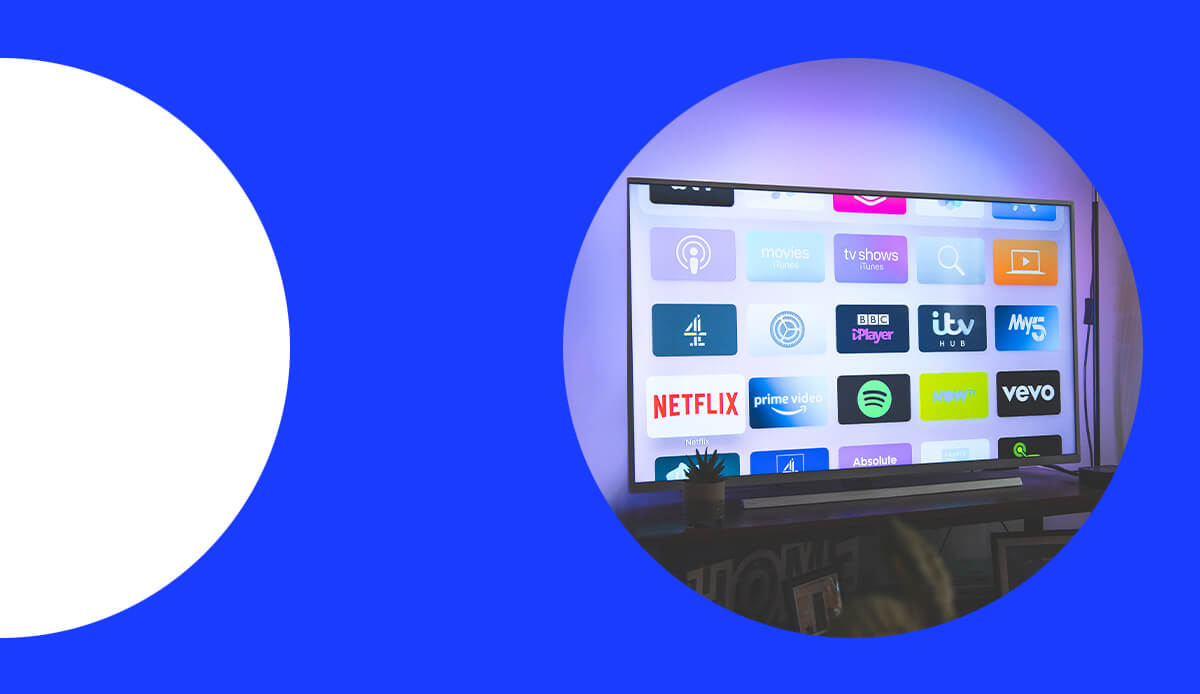
In an increasingly automated, AI-dominated world, almost every business process can be optimised using technology. Programmatic advertising is one such example, using machine learning and automation to enhance the efficiency and ROI of your advertising campaigns.
The Benefit Of Programmatic Advertising
Programmatic advertising uses machine learning to analyse all advertising data in real-time to then automatically (or ‘programmatically’) bid for the right ad space and target audience. This allows you to serve programmatic digital display ads to the right people, at the right location, and at the right time.
Programmatic advertising involves three entities – a website that is selling ad space via a Supply-Side Platform (SSP); an advertiser buying ad space via a Demand-Side Platform (DSP); and an intermediary Data Management Platform that connects the two.
When a visitor lands on a website, the Data Management Platform analyses their characteristics (location, age, interests, etc.) and then decides on the right programmatic digital display ad to show.
This ensures that the advertiser is targeting the right audience, the visitor is seeing the most valuable ad, and the website owner is displaying the most relevant content. It’s a win-win-win situation.
Creating a Programmatic Campaign Strategy
#1 Define Your Objective
The outcome you are looking to achieve will greatly influence the buying model, so defining the campaign’s objective is an important first step.
If you’re looking to build brand awareness, for example, you will focus on impressions and reach (via the Cost Per Mille (CPM) bidding model). On the other hand, if your goal is to increase sales, you will want to focus on leads and conversions (via Cost Per Click (CPC), Cost Per Lead (CPL), and Cost Per Acquisition (CPA) bidding models).
The algorithm repeatedly looks to fulfil your goals and KPIs, so you have to make sure they are properly defined in the first place.
#2 Define your Ideal Target Audience
To ensure programmatic ad platforms correctly match your ad with the right user, they utilise first, second, and third-party data, but for the platform to identify the right user, it’s essential to define your target audience beforehand.
Parameters like interests, demographics, and psychographics enable the ad platform to correctly segment and identify your ideal audience. You have to, therefore, define the audience before you launch the campaign.
#3 Choose the Right Platform
The Demand-Side Platform (DSP), which is the ad platform that you as a media space buyer will approach to run programmatic digital display ads, should be equipped to meet your needs and deliver the results you are looking to achieve.
Different DSPs offer different services. Some work with niche websites, while others offer a broad range. Some limit the types of ad formats allowed while others don’t.
Once you have defined the goals you are looking to achieve and the audience you are trying to target, choosing the right DSP is just a matter of analysing which platform meets your criteria.
#4 Create Engaging and Relevant Ads
Seasoned advertisers know that different goals and audiences demand different types of ads. The best way to create an engaging ad that your viewers will respond to is by focusing on the goal and the customer journey.
If you’re looking to build brand awareness the ad must talk about the brand and then take the user to a landing page that gives them more detailed brand information. You won’t necessarily have a CTA that will lead to a conversion, the focus here is to create awareness and build brand recall.
On the other hand, if you’re looking to increase sales, the ad will have to give an immediate purchase incentive and take the user to a product page that is again designed to incentivise a purchase.
#5 Measure KPIs and be Agile
Programmatic ads generate and analyse tons of data in real-time and then tweak the campaign to better suit your goals. It is advisable to monitor and measure the performance of your ads to ensure they are headed in the right direction and that they are giving you desirable results.
The next section will help you understand how you can best optimise your programmatic ad campaigns.
Optimise Your Programmatic Ad Campaigns
Consistently measuring your programmatic digital display ads by tracking the right metrics will result in a successful campaign. Here are a few ways to ensure your campaigns are delivering optimal results.
#1 Track Win Rate
Many advertisers will be competing for the same audience and media space. The DSP platform chooses which ad to display on a channel based on relevancy, and the bid.
Win Rate is a measure of bids you successfully won, or how many times your ad was applicable to be shown and it actually did.
If the win rate is low, it could mean you are being outbid and that your ad is not accruing enough impressions. You will need to tweak the ad and adjust your bid for a better win rate.
#2 Monitor Spend Rate
While a high win rate is good, it could also mean you will burn through your budget quite fast. In such cases, it’s useful to keep track of how your funds are being spent and that they are being evenly distributed throughout the duration of the campaign. You can adjust the bid to increase or decrease the frequency of impressions.
#3 Measure Goals
Define KPIs based on your campaign’s goal and track them to ensure the programmatic ad is yielding optimal results.
If your goal is brand awareness, for example, measuring impressions will help you track the ad’s success rate. If the rate is low, you will need to adjust the targeting parameters and the bid.
On the other hand, if your goal is conversions, you will need to measure actions on the landing page. If the conversion rate is low, you will need to tweak the ad, the landing page, or both.
By tracking KPIs that are relevant to your goal, you will be able to optimise the programmatic ad successfully.
Key Takeaways
- Programmatic advertising uses machine learning and automation to automate the process of buying advertising space.
- Programmatic ads involve a seller selling ad space via a Supply-Side Platform (SSP) and a buyer (advertiser) bidding for the ad space via a Demand-Side Platform (DSP).
- Defining your goals and target audience is key to running successful programmatic ads.
- Measuring win rate, spend rate, and other metrics against the pre-determined KPIs will ensure your programmatic ads are always optimised.
Working With M&C Saatchi Performance
At M&C Saatchi Performance, our programmatic experts offer value through data-led audience targeting, technical integrations, audience & market insights, one-to-one consulting, and more.
We help you create a complete omnichannel ad strategy while also taking ownership of management and reporting, so you can focus on other business tasks.
Reach out to us to discuss your next programmatic ad campaign.

